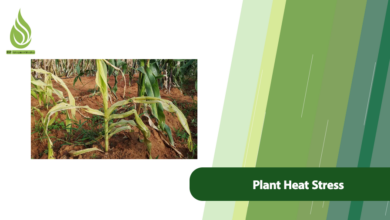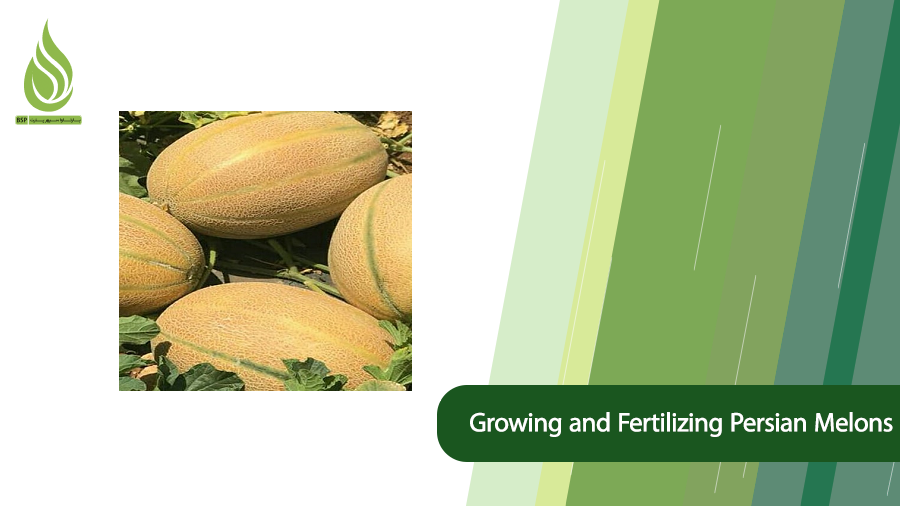
Growing and Fertilizing Persian Melons for a Superior Harvest
Persian melons, celebrated for their succulent, sweet flesh and exceptional nutritional profile, are a cherished summer fruit. Renowned for their aromatic flavor and vibrant appearance, these melons are a staple in both local and international markets. In Iran, where they are a cultural and agricultural treasure, Persian melons are grown alongside other varieties like cantaloupes and honeydews. Their versatility and market demand make them a lucrative crop for farmers. By adopting proper cultivation techniques and a strategic fertilization plan, growers can achieve high yields and superior fruit quality, ensuring profitability. This comprehensive guide explores every aspect of growing Persian melons, from selecting the right climate to harvesting and storage, with a detailed fertilization schedule to maximize productivity. Whether you’re a seasoned farmer or a beginner, this article provides actionable insights to help you succeed. Let’s dive in.
Ideal Climate for Growing Persian Melons
Persian melons are large, juicy fruits with a global fanbase, thanks to their refreshing taste and versatility in culinary applications, from fresh consumption to desserts and beverages. In Iran, they are a symbol of summer abundance, often enjoyed in family gatherings or exported to discerning markets abroad. Their cultivation offers farmers a golden opportunity to tap into both domestic and international demand. Persian melons come in diverse forms, including saffron-colored, green-skinned, and seeded varieties, each with unique flavors and textures. This diversity empowers growers to select cultivars that align with market preferences, whether for local consumers or export standards.
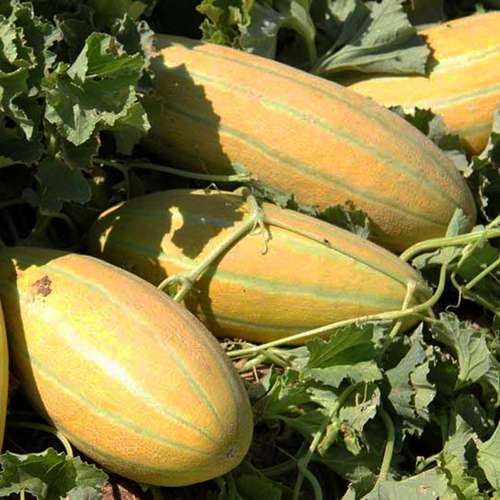
Successful cultivation of Persian melons hinges on understanding their environmental needs. As warm-season crops, they thrive in temperatures between 68–86°F (20–30°C), with daytime highs ideally around 77–82°F (25–28°C). Temperatures below 59°F (15°C) can slow growth, reduce fruit set, or cause chilling injury, particularly during early development. Sudden cold snaps, common in some regions during spring, necessitate protective measures like row covers or plastic tunnels to shield young plants. Conversely, excessive heat above 95°F (35°C) can stress plants, leading to reduced pollination or fruit deformities. Therefore, tropical and subtropical climates, such as those found in Iran’s southern and central regions, are ideal for Persian melon cultivation.
Sunlight is another critical factor. Persian melons require 6–8 hours of direct sunlight daily to fuel photosynthesis and ensure robust growth. Insufficient light results in weak vines, smaller fruits, and lower sugar content, diminishing market appeal. When selecting a field, prioritize open, unshaded areas free from tall trees or structures that cast shadows.
Soil moisture management is equally vital. Persian melons prefer consistently moist soil during their growth phases, particularly during flowering and fruit development. However, overwatering or poor drainage can lead to root rot, a common issue in heavy clay soils. A balance must be struck to maintain soil moisture without waterlogging, making well-draining soils essential. Drip irrigation systems are highly recommended, as they deliver water directly to the root zone, minimizing waste and reducing the risk of fungal diseases.
Steps for Planting Persian Melons
If you’re in a region with a warm, sunny climate, Persian melons are an excellent crop to consider. Their cultivation requires careful planning, starting with site selection and soil preparation. Below is a step-by-step guide to planting Persian melons, tailored to ensure optimal growth and yield.
1. Site Selection
Choose a field that receives full sunlight and has good air circulation to prevent fungal issues. Avoid low-lying areas prone to water accumulation, as Persian melons are sensitive to waterlogged conditions. The soil should be sandy-loam or loamy, with a pH of 6–7, which supports nutrient uptake and root health. If you’re unsure about your soil’s characteristics, conduct a soil test through a local agricultural extension service. This test will reveal pH, nutrient levels, and salinity, allowing you to make informed amendments before planting.
2. Soil Preparation
Soil preparation is a cornerstone of successful melon cultivation. Begin by tilling the soil to a depth of 12–16 inches (30–40 cm) to improve aeration, break up compacted layers, and remove weeds or crop residues. Weeds compete with melons for nutrients and water, so thorough removal is essential. Incorporate organic matter, such as well-rotted compost or aged manure, at a rate of 5–10 tons per acre to enhance soil fertility and structure. Organic matter improves water retention in sandy soils and drainage in heavier soils, creating an ideal environment for Persian melons.
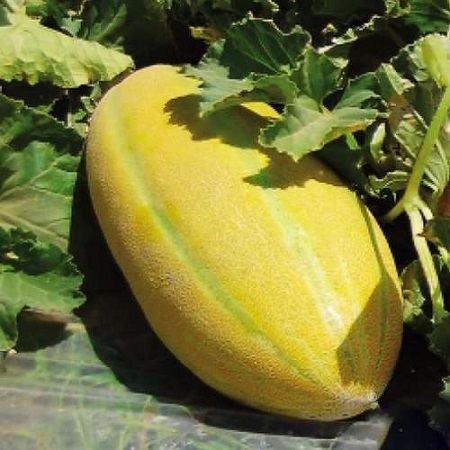
If the soil test indicates nutrient deficiencies, apply mineral fertilizers like phosphorus or potassium to address them. For high-pH soils (common in arid regions), sulfur-based amendments can lower pH to the optimal range. After adding fertilizers, mix the soil thoroughly to ensure even distribution.
3. Planting Method
Persian melons can be grown from seeds or seedlings, depending on your resources and climate. Direct seeding is common in warmer regions, while transplanting seedlings is preferred in areas with shorter growing seasons or unpredictable spring weather.
- Direct Seeding: Sow seeds in early spring when soil temperatures reach 54–59°F (12–15°C). Create raised beds or ridges spaced 3–6 feet (1–2 meters) apart to improve drainage and warm the soil. Plant seeds in rows, with 12–18 inches (30–45 cm) between seeds and a depth of 0.4–0.8 inches (1–2 cm). Thin seedlings to the strongest plants once they develop their first true leaves.
- Transplanting Seedlings: Start seeds in a warm seedbed or greenhouse 4–6 weeks before the last expected frost. Use biodegradable pots to minimize root disturbance during transplanting. When seedlings reach the two- to three-leaf stage, transplant them to the field, spacing them as you would with direct seeding. Water immediately after transplanting to settle the soil around the roots.
4. Timing and Variety Selection
Timing is critical for Persian melons. Planting too early risks cold damage, while planting too late can reduce the growing season, leading to smaller fruits. In most regions, early spring (March–April) is ideal, aligning with rising temperatures. Select Persian melon varieties suited to your climate and market. Popular varieties include ‘Samsouri’ and ‘Galia’, known for their sweet flavor and firm texture. Consult local agricultural experts or seed suppliers to identify high-yielding, disease-resistant cultivars.
5. Post-Planting Care
After planting, irrigate gently to keep the soil moist but not saturated. Monitor for weeds, which can outcompete young melon plants, and remove them manually or with shallow hoeing to avoid root damage. Mulching with straw or plastic film can suppress weeds, conserve moisture, and warm the soil, especially in cooler climates.
Fertilizing Persian Melons: Timing and Types
Fertilization is a cornerstone of Persian melon cultivation, directly impacting vine health, fruit size, and flavor. A well-planned fertilization schedule, tailored to the plant’s growth stages and soil conditions, ensures optimal nutrient availability. Below is a detailed guide to fertilizing Persian melons, including timing, fertilizer types, and application methods.
1. Pre-Planting Fertilization
Before planting, enrich the soil with organic and mineral fertilizers to establish a nutrient-rich foundation. Apply 5–10 tons per acre of compost or well-rotted manure to boost organic matter and microbial activity. Incorporate mineral fertilizers like triple superphosphate (for phosphorus) and ammonium sulfate (for nitrogen and sulfur) based on soil test results. Ammonium sulfate is particularly effective in Iran’s high-pH soils, as its sulfur content lowers pH, improving nutrient availability. Apply 50–100 pounds per acre of ammonium sulfate, mixed into the top 6 inches of soil.
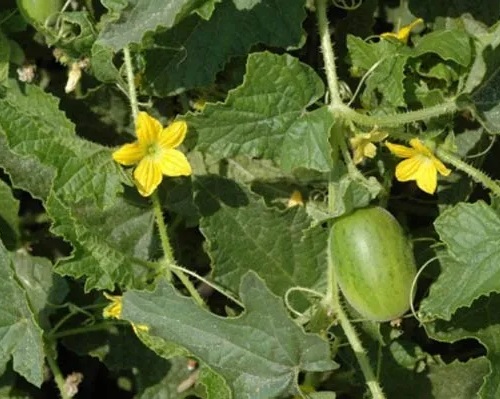
2. Germination Stage
Once seedlings reach 4–6 inches (10–15 cm) tall, apply nitrogen-rich fertilizers to promote vigorous vegetative growth. Urea or ammonium nitrate fertilizer at 20–30 pounds per acre supports leaf and stem development. Iron chelates, applied as a foliar spray (0.5–1 pound per acre), enhance chlorophyll production, resulting in vibrant green leaves and efficient nutrient uptake. Water thoroughly after application to prevent fertilizer burn.
3. Active Growth Stage
During flowering and fruit set, Persian melons require balanced nutrition, with an emphasis on phosphorus and potassium. Apply 30–50 pounds per acre of monoammonium phosphate to support flower formation and root growth. Potassium sulfate, at 40–60 pounds per acre, increases fruit number, improves disease resistance, and enhances sugar accumulation. Micronutrients like boron (0.5–1 pound per acre) are critical during fruit development, as they improve pollen viability and fruit quality. Foliar applications of boron are highly effective.
4. Fruit Bulking Stage
As fruits begin to enlarge, calcium becomes essential to prevent blossom-end rot and ensure firm, marketable melons. Persian melons have a high calcium demand, particularly in sandy or saline soils. Apply calcium nitrate (50–75 pounds per acre) through drip irrigation to deliver calcium directly to the roots. In alkaline soils, reapply sulfur-containing fertilizers (e.g., elemental sulfur at 100–200 pounds per acre) to maintain optimal pH. Zinc and magnesium, applied as foliar sprays, support fruit expansion and prevent nutrient deficiencies.
5. Pre-Harvest Fertilization
Two to three weeks before harvest, apply high-potassium fertilizers like potassium nitrate (30–50 pounds per acre) to enhance fruit flavor, color, and shelf life. Potassium improves the melon’s sweetness and visual appeal, critical for market success. Avoid excessive nitrogen at this stage, as it can delay ripening and reduce fruit quality.
Application Tips
- Split Applications: Divide nitrogen and potassium applications into 2–3 doses (pre-planting, post-planting, and flowering) to minimize nutrient leaching and ensure steady availability.
- Soil Testing: Conduct annual soil tests to monitor nutrient levels and adjust fertilization accordingly. This prevents over-fertilization, which can harm plants and the environment.
- Foliar Feeding: Use foliar sprays for micronutrients like iron, boron, and zinc, as they are absorbed quickly and address deficiencies effectively.
- Irrigation Integration: Apply water-soluble fertilizers through drip irrigation for precise delivery and reduced waste.
Key Tips for Growing Persian Melon
Proper care throughout the growing season is essential for high-quality Persian melons. Below are detailed tips to optimize growth, manage challenges, and ensure a successful harvest.
Irrigation Management for Growing Persian Melons
Drip irrigation is the gold standard for Persian melons, delivering water efficiently to the root zone while minimizing evaporation and fungal risks. Aim for 1–2 inches of water per week, adjusting based on soil type and weather. Sandy soils require more frequent irrigation, while loamy soils retain moisture longer. Water early in the morning or after sunset to reduce evaporation losses. Avoid overhead watering, as wet foliage invites diseases like powdery mildew.
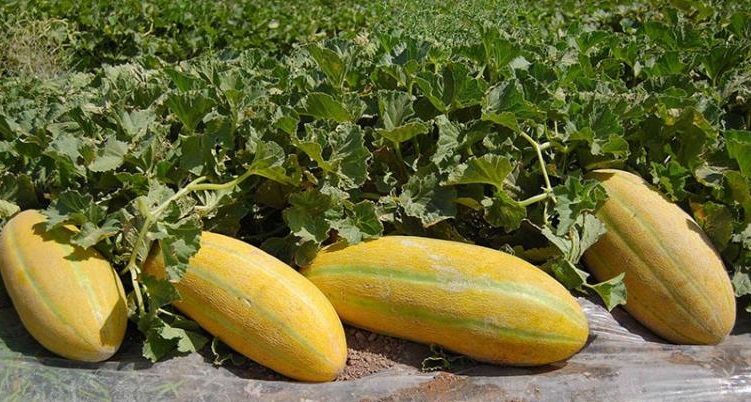
Ten days before harvest, reduce irrigation to induce controlled water stress. This practice concentrates sugars in the fruit, enhancing sweetness and flavor. However, excessive stress can shrink fruits or reduce yields, so monitor plants closely.
Pest and Disease Control for Growing Persian Melons
Persian melons are susceptible to pests like aphids, spider mites, and melon fruit flies, which can damage leaves, transmit viruses, or infest fruits. Regular scouting is essential. Use yellow sticky traps to monitor and control flying pests, and apply neem oil or insecticidal soap for early infestations. Avoid broad-spectrum pesticides that harm beneficial insects like bees, which are critical for pollination.
Common diseases include powdery mildew, downy mildew, and fusarium wilt, often triggered by high humidity or poor air circulation. Symptoms include white powdery spots, yellowing leaves, or wilting vines. Improve air flow by spacing plants adequately and pruning excess foliage. Apply approved fungicides, such as sulfur-based products, at the first sign of disease. Crop rotation with non-cucurbit crops (e.g., wheat or barley) reduces soil-borne pathogens.
Pollination
Persian melons rely on bees and, to a lesser extent, wind for pollination. Encourage bee activity by planting pollinator-friendly flowers (e.g., marigolds or clover) near the field and avoiding pesticide applications during peak pollination hours (mid-morning). If bee populations are low, consider introducing managed hives during flowering. Hand-pollination is an option for small-scale growers, using a soft brush to transfer pollen from male to female flowers.
Pruning and Fruit Thinning
During flowering and early fruit set, remove weak or deformed flowers and fruits to focus the plant’s energy on high-quality melons. Limit each vine to 2–3 fruits to ensure larger, sweeter melons. Prune excessive foliage to improve air circulation and light penetration, but avoid over-pruning, as leaves are essential for photosynthesis.
Harvesting and Storage
Persian melons are typically ready for harvest 70–90 days after planting, depending on the variety and climate. Check for ripeness by examining the skin color (often turning creamy or yellowish), texture (slight softening), and aroma (sweet and musky). The stem should slip easily from the fruit when gently tugged, a reliable indicator of maturity.
Harvest in the early morning when fruits are cool to preserve quality. Handle melons gently to avoid bruising, and place them in padded crates or baskets. Store in a cool, dry environment at 45–50°F (7–10°C) with 85–90% relative humidity. Proper storage extends shelf life up to 2–3 weeks, ensuring melons reach markets in prime condition.
Crop Rotation and Soil Health for Growing Persian Melons
Rotate Persian melons with shallow-rooted crops like wheat, barley, or legumes to disrupt pest and disease cycles and improve soil fertility. Avoid planting melons after other cucurbits (e.g., cucumbers, watermelons) due to shared pathogens. Incorporate cover crops like clover or rye during the off-season to reduce erosion, suppress weeds, and add organic matter.
Soil Salinity Management
High soil salinity, common in arid regions, can stunt melon growth and reduce yields. If soil tests indicate elevated salinity, apply gypsum (calcium sulfate) at 1–2 tons per acre to displace sodium ions and improve soil texture. Leaching with excess irrigation water can also flush salts below the root zone, but this requires careful water management to avoid waste.
Conclusion
Growing Persian melons is a rewarding endeavor that combines agricultural skill with market savvy. By selecting the right site, preparing the soil meticulously, and following a tailored fertilization and care plan, farmers can produce high-quality melons that command premium prices. Attention to climate, irrigation, pest management, and timely harvesting ensures a bountiful harvest with exceptional flavor and shelf life. Whether you’re cultivating for local markets or international export, Persian melons offer a pathway to profitability and agricultural success. Start planning your melon crop today, and enjoy the fruits of your labor in the warm summer months.
